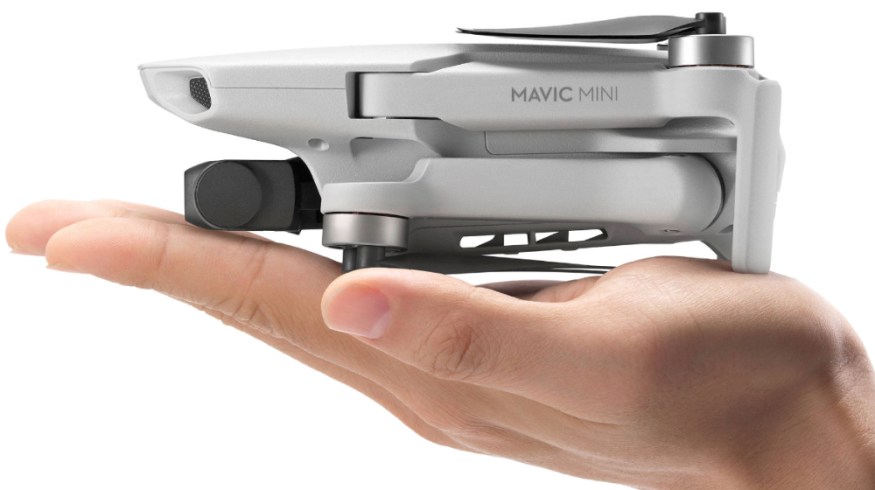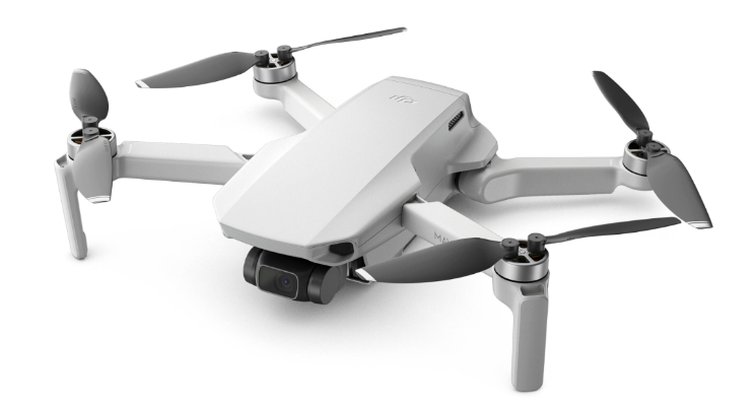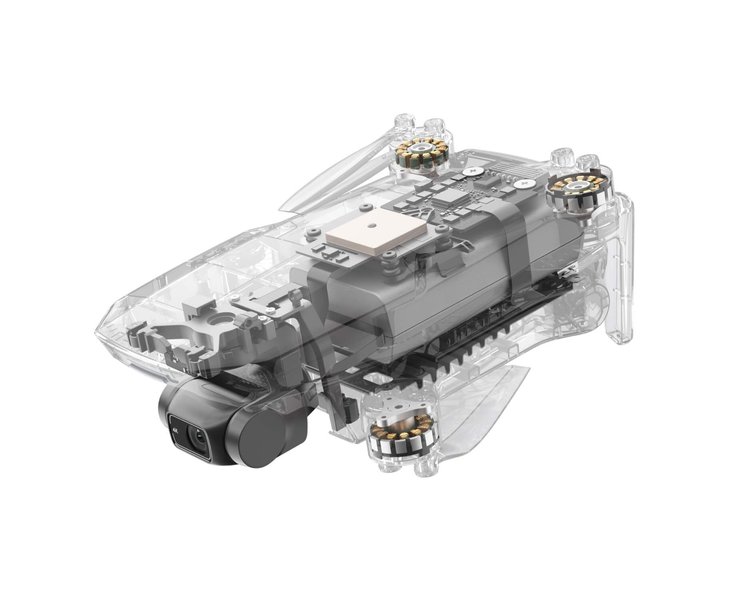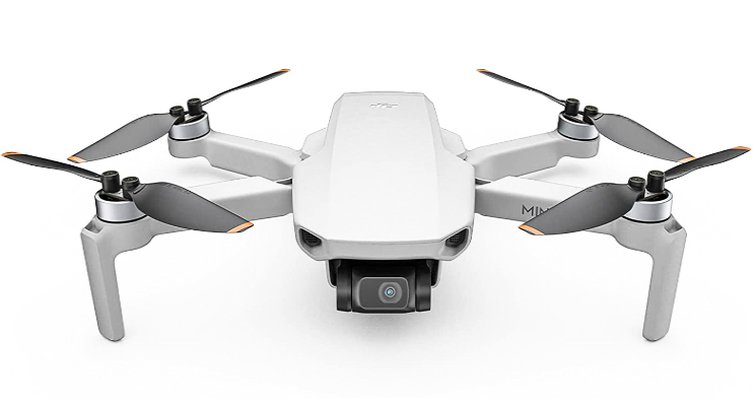
Attack of the Mini Drones – Smaller Crafts Can Offer More Value
Mini drones must appeal to both the adventurous consumer and the working professional to survive in this market. So, how does it hold up?
The arrival of drones has revolutionized aerial cinematography, introducing the “god view” to thousands of productions that otherwise wouldn’t have the capacity to extend a camera above one’s head.
But, what does the smaller end of the drone market offer? Let’s check it out . . .
Mavic Mini – $399
Let’s start with a bit of basic physics. In the military, there’s a job called “the loader.” They calculate just how much an aircraft can carry for it to reach its destination, including fuel and cargo. The same principles apply to drone cinematography—and Formula One cars and horse racing for that matter.
Less weight gives you more flight time.

DJI states that the Mavic Mini weighs in at 249g—under nine ounces. That’s roughly the same as half a pint of milk. This takeoff weight includes the battery, propellers, and a microSD card, and gives you up to thirty minutes of flight time. The DJI caveat being that this is in windless conditions, at a speed of no more than 8.7mph.
But, thirty minutes should be plenty of time to shoot your content, unless it’s animal or human (take behavioral issues into account).
Being a 2019 product, you could claim that the camera and capture side of the Mavic Mini is outdated. However, you’d be wrong as you still get 2.7K at up to 30p—2720×1530 24/25/30p. HD performance is 60p—24/25/30/48/50/60p. Try it in cinematic mode and you’ll be impressed at the smoothness of the footage.
The gimbal works across a 3-axis—tilt, roll, and pan—and you have a video ISO range of up to 3200 ASA, which can be forced manually.
Control is through the DJI Fly app on your smartphone, which attaches to the DJI controller.
With its weight advantage, you may find that certain flight restrictions don’t apply to the Mavic Mini, but check your local guidance.
This is certainly a good secondhand buy. You might need to swap out the battery, but as a starter craft, it could be yours for a couple hundred dollars.
Mavic Mini 2 – $449
A year later, in November 2020, the Mavic Mini 2 appeared. DJI decided to call this craft the Mini 2 as part of the Mavic series. But, by doing so, initiated a Mini product roadmap.

The Mini 2 looks exactly the same as the Mavic Mini and, more importantly, weighs roughly the same as well. DJI found a winning formula that attracted a wider market when prosumers started using such lightweight crafts.
But, DJI had some fantastic upgrades for Mini 2, including 4K, their OcuSync 2.0 2.4/5.8 GHz wireless transmission technology, giving the craft 10km operating distance, and wind resistance that now allowed the Mini 2 to fly with winds up to 24mph and as high as 2.5 miles.
Their marketing department also pointed out the fact that 0.2 of an ounce had been shaved off and a minute added to the flight time—again, under windless conditions. Speed had increased to 36mph.

The Mini 2’s capture system now provided 4K with a 100 Mbps data stream. It also upped the performance of the 2.7K to include 60p—4K at 3840×2160 @ 24/25/30fps; 2.7K at 2720×1530 @ 24/25/30/48/50/60fps. There was also a choice of total sensor sizes: 4:3 at 4000×3000 and 16:9 at 4000×2250, giving you crop-in choices.
Additionally, there was support for zoom—albeit the digital variety—with doubling for 4K, 3X for 2.7, and 4X for HD. Perhaps more for consumer use as making pixels bigger doesn’t give you the same results as optical zoom.
But, better components allowed DJI to upgrade their app to present some useful presets, including Dronie, Helix, Circle, Rocket, and Boomerang.
The DJI Fly app then lets you add filters and soundtracks, and share your work directly to social media platforms. A reverse Rocket would zoom down to a single point and be a cool establishing shot for a film or short.
The other standout feature is the ability for the drone to download the footage when it’s at a certain distance to your smartphone. The app will automatically scan for the craft and start downloading at up to 20Mb/s. Great when you’re after a quick edit.
Fimi X8 Mini – $329
Hurrah! A mini drone that isn’t made by DJI. This is the Fimi X8 Mini, which offers 4K video performance (in fact UHD) with a 3-axis gimbal onboard. But, the rest of the specs seem familiar.

The Fimi X8 definitely looks similar to the two previous Mavic models and even matches them on weight, coming in at around 8.8 ounces, or 249g—uncanny! You also get around thirty minutes flying time (thirty-one with the Pro battery), and a 4K camera at only 30p.
Transmission is via a Time-division multiple access TDMA, which is a digital cellular communications technology and offers five miles of remote control, or you can use 5.8 GHz Wi-Fi.
Wind resistance is on level 5, like the Mini 2, which allows Fimi to offer a time-lapse option for a steady flight mode. There are also live-streaming options for publishing to social media channels.
4K performance is actually the broadcast UHD type, so 3840 x 2160, but does shoot in F-Log and HDR. Although, saying you shoot in HDR is like saying you shoot normally as all the HDR benefits are derived in post—you just shoot as well as you can in the first place. Frames rates are 24/25 and 30p.
The X8 is app-powered and boasts the use of AI for some smart tracking modes and night shooting, which promises to lower the noise floor. The tracking modes are good and include “follow me” instructions from behind and from the side, called Profile.
The Fimi X8 is an obvious attempt to offer an alternative to the DJI line, and does its best to copy most of the Mini 2’s specs. But, it’s much cheaper than both Mavic Minis, with a similar performance to Mini 2, and has those smart flight modes.
DJI Mini SE – $299
DJI obviously felt the need to introduce an entry-level drone to their smaller fleet with the Mini SE. Features are cherry-picked from the Mavic Mini range, like the 2.7K shooting resolution and the low weight of 249g.
Also, Mini SE wasn’t released in all DJI’s territories, which means their data is telling them that some won’t like the lack of features in the SE. Apparently, the US made the cut.

The Mini SE also borrows the shooting modes from the Mini 2 like Dronie, Helix, Circle, Rocket, and Boomerang. In addition, there’s a CineSmooth mode that slows down flight speed and movements for precision and stability.
So, just see this drone as a pared-down Mini Mavic for the newbie crowd. But, with all the updated features in the DJI App, this is probably the best beginner drone out there—if you can get ahold of one.
What’s Coming for Mini Drones
The Mini drone market is a mature one and appeals to a wide range of flyers—newbies and professionals—who want a drone in their camera bag.
For next year, DJI is rumored to be launching a new Mini product. Look out for a Mini 3 and an FPV Mini, which we’ll add to our review list once they’re launched.
For more on drone technology, check out these articles:
- Pros and Cons: Is Drone Videography Still Viable?
- Learn to Not Crash Your New Drone: The DJI Flight Simulator
- CES 2018: DJI Releases New Gear Lineup, Including a $99 Drone
- Traditional Camera Moves Made Easy With DJI Drones
- Best Video Drones Under $1000
Cover image via DJI.





